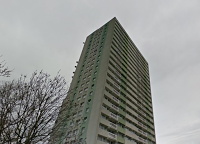Draft 1
Analyse your use of conventions using PEER:
- An image of the main artist has been included, however he is not facing the camera and instead stares down at the floor. Our camera-operator captured this using a long shot, with the intention of the artist looking mysterious, with the use of low-key lighting.
- Key information has been included in the advert to prevent the confusion of audiences
- The typography used is conventional to the genre, slick and adventurous
Audience Feedback:
- Even with having a dark background the advert stands out, the font is bold and easy to read, and all they key details of the record label, artist name and album title is there.
- Where the music can be downloaded should be included
- The artist placing on the cover needs to be fixed as it is obvious and clear that it has been photo-shopped
Draft 2
Analyse your use of conventions using PEER:
- A few changes were made to improve the quality of the advert to keep the consistency of it
- We added important information, such as where to download the album
- The shade of the background was made darker, to increase the gloom feeling around the album as we had hoped for, something we saw as a 'don't judge a book by its cover' sort of feel with the campaign.
Audience Feedback:
- Looks far better than the other draft, as it says 'Available on Spotify' at the bottom, so now I know I can find it on Spotify
- The colours from the first draft, stayed consistent and remained on the second draft for efficiency
- The white spotting seen in the first draft isn't as visible and has been removed.
Conclusion
The drafting process has allowed us to create an advert that we have deemed as a group, as acceptable to the audience and with us receiving feedback, this has allowed us to go back to the drawing board and improve on the original design. It is important that we are able to receive feedback from the target audience, and also for the hip-hop industry to gather feedback using our campaign, in turn helping them to understand what is important to the audience and how they can target their specified audience effectively and efficiently.






















